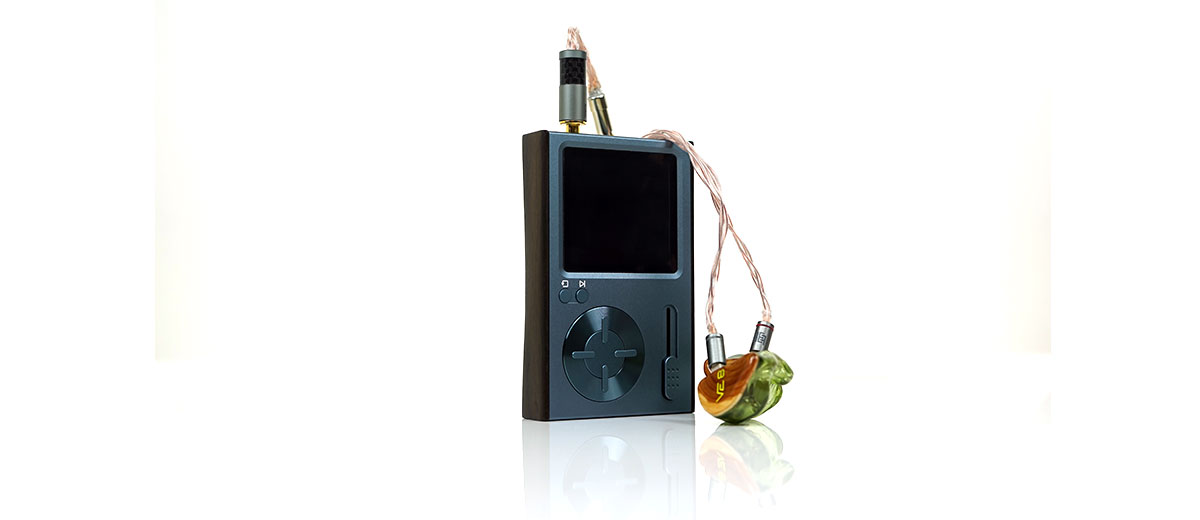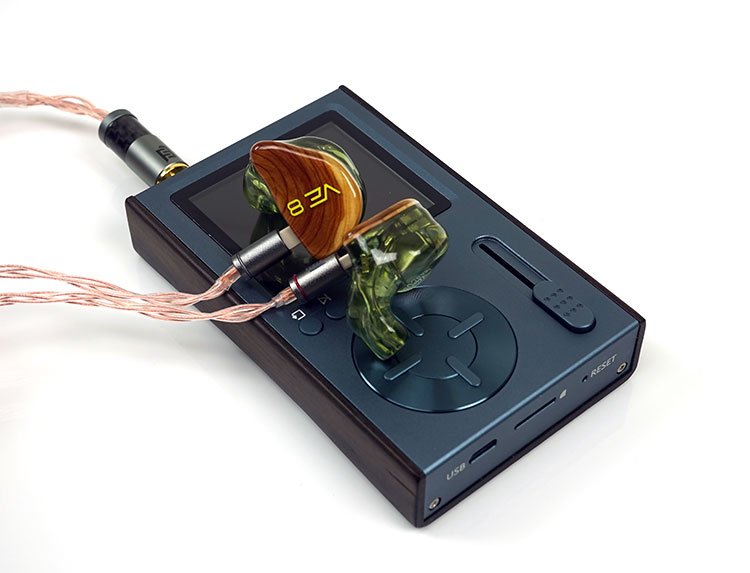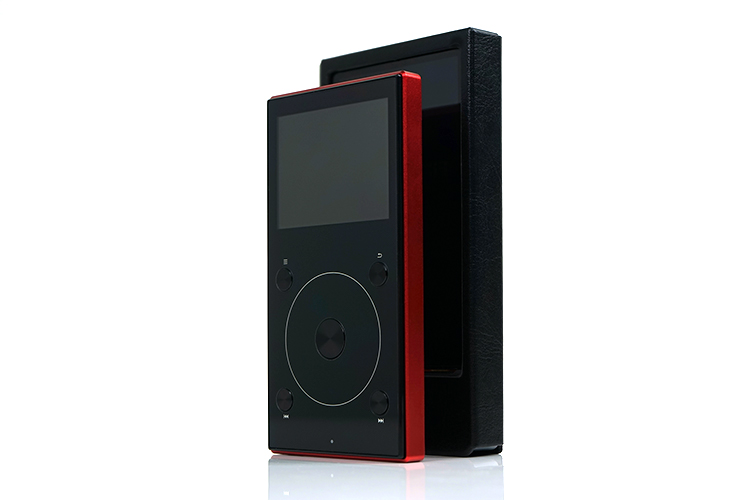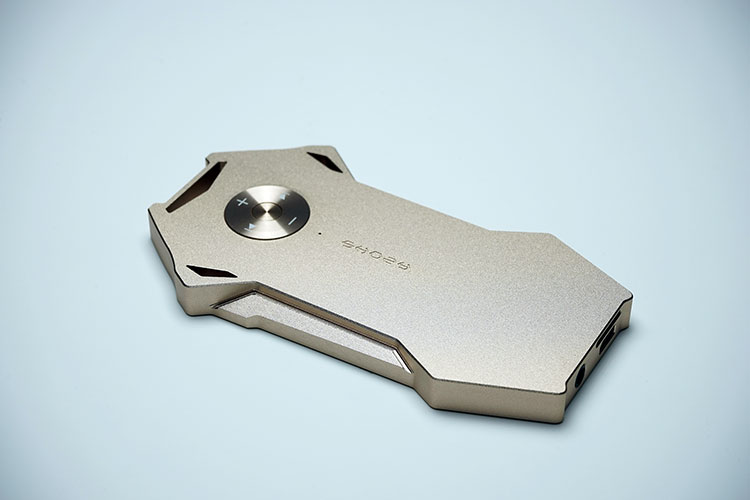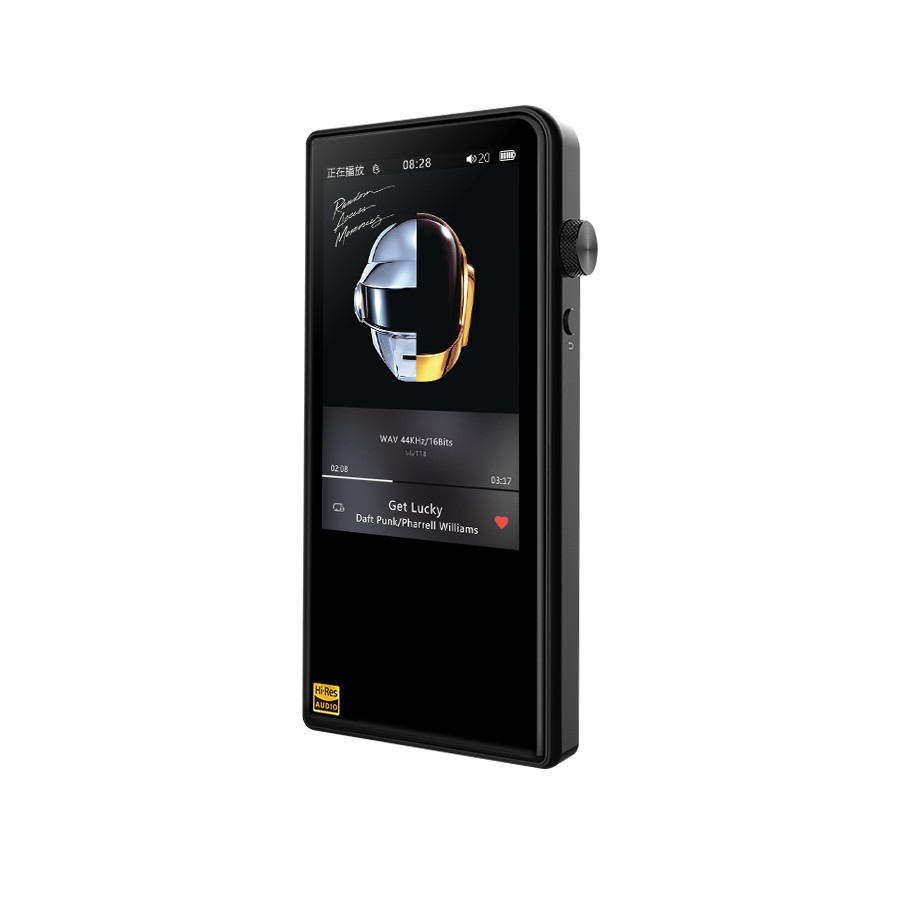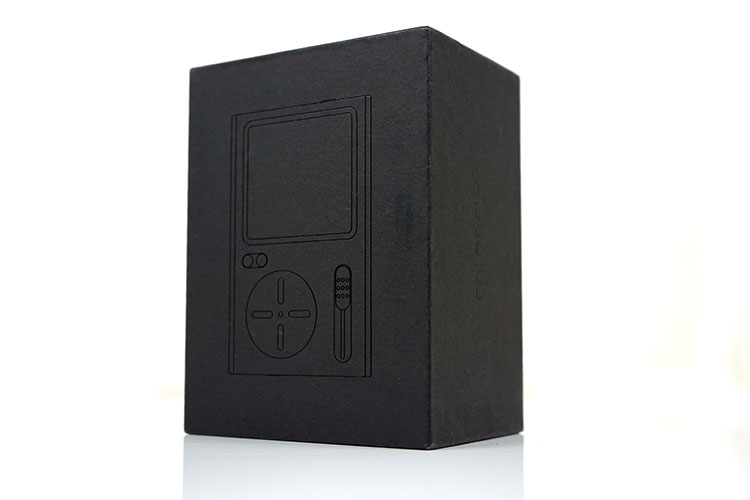Sound Impressions
I had to do a double check with Colorfly on this one and yes it is confirmed that the output resistance of the C10 is 16Ω. That is higher than both the HibY Music R6 and Shanling’s M2s. Thus, low-efficiency (low-z) IEMs will have an altered sound and we need to take that into account.
All descriptions below are based on the use of an iFi IEmatch converter with various IEMs which negates impedance mismatching as well as some impressions using the neutral FIBAE 1 from Customs Art which also uses impedance mismatching busting technology.
Tonality & Presentation
Tonally, and when properly impedance matched, the C10 is a ‘warm to natural’ sounding digital media player. The presentation is nicely balanced with perhaps a slight bias to its mid-range presence but nothing overly skewed.
Bass
Bass performance is fairly linear with a decent extension and a touch of mid-bass warmth but nothing heavy-handed. Thinks Opus#3 in terms of bass weighing and you would not be too far off.
It is a coherent low-end performance rather than a dominant one adding just enough weight and lower order harmonics to keep the C10 a very smooth listening experience.
Mids
Instrumental timbre does not sound digital or dry but it is not as laid back or as heavy sounding as the X5iii. It does sound a little closer to the Alien Gold’s flowing warmer timbre but with much better detail.
The instrumental note body is very good but slightly north of neutral. I wouldn’t call it euphoric, I think it falls slightly short of that but it has a nice even harmonic bias and generally sounds very smooth.
The C10 even harmonic bias and slightly rounded attack means it is completely devoid of sharp-sounding partial overtones. You will unlikely hear too much sibilance, splashiness, and hard-edged notes on the C10.
I will, however, state it is not quite as rounded sounding as the Opus#1 which I felt was overly done killing any levels of interesting contrast. I think the C10 has a better balance in that respect.
It also has a wonderfully low noise floor. This is perhaps one of the best DAPs I have used outside of the R6 for low noise on super-efficient IEMs which means you get a superb black background, excellent instrument separation, and generally a very refined delivery.
The higher resistance output generally tends to produce much lower noise floors on devices such as these.
Treble
Treble performance on the C10 is clean and clear but slightly laid back. It is not super bright in that regard or forward and sparkling sounding like the X7ii.
Instead, it takes a neutral to slightly south of neutral position with an emphasis on a natural coherent sound. Percussion work is articulate but with a good body and lacks any tendency to sound splashy or hard-edged.
There is a little bit more of a final octave kick than a lower treble kick so it does avoid sounding shelved-down or lacking in headroom with balanced IEMs.
Without Impedance Matching
Tonality
Taking off the IEMatch and using a well-known sensitive IEM such as Andromeda did exactly what I thought it would. The results were fairly similar to the M2s. Gone was the smooth balanced performance and in comes a much harder-edged, leaner, cleaner, and brighter signature.
I must emphasize the detail or clarity of the C10 remains unaltered for me. I did not sense any loss in resolution as a result of using highly efficient low-impedance IEMs. Simply a massive change in the tonal bias from warm to natural to bright and lean.
Bass & Mids
The bass body on the C10/Andromeda was sucked out delivering a presentation lacking in depth and sounding much flatter staging-wise. Instrumental delivery was quick, clean, and precise but lacked body and delivered an abundance of odd harmonic bias.
With 64 Audio’s A18 the tonal skew was less pronounced and more acceptable than the Andromeda.
However, moving from an impedance-matched setup, vocals did have a glassier edge to their attack, and generally, a bit more sibilance crept into the mids and lower treble. I simply preferred the more realistic timbre of the impedance-matched A18.
It stopped short of sounding peaky and harsh but certainly, it became a lot more fatiguing than before. Vocals did move forward a little over a properly impedance-matched presentation but again it became a lot harder edges and more digital sounding.
Treble
The toughest part was the lower treble and upper mids. This is a tonal bias that much more forward-sounding with a splashier and leaner timbre. If you like that tonal bias then you in for a treat as the C10 delivers it in spades to the point where it sometimes overpowers the vocal presence.
Synergy
Sensitivity
The C10 delivers 80mW into 32Ω. Both the X3iii and M3s deliver slightly more power at 130mW into 32Ω. I am going to presume all measurements from each company were done with relatively similar weighting using proper 32Ω loads.
It does mean that the C10 is not quite as powerful as either of the two competing DAPs and just edged the FiiO X1 2nd gen in terms of total output power at 32Ω, (70mW). A few things to come out of those ratings are noise levels and power.
Noise
The first is the noise performance which is much superior to the FiiO DAPs. No doubt this is helped by the 16Ω output resistance level as well as the relatively modest levels of output power.
This makes the C10 ideal for medium-efficiency IEMs that do not require impedance matching or possess complicated crossover networks.
If you have an IEMatch adapter from iFi then pretty much every IEM outside of the super demanding RHA CL1 and Cl750 are on the cards as potentially good matches.
Power
Dynamic Portable
The second is the level of power output does not make it particularly powerful for most headphones above 32Ω. Headphones such as the Meze 99 Classic and Neo will run just fine. These two are 23 and 32 ohms each and will have no such power or volume control issues.
The only thing to note from these two dynamic closed headphones is the low impedance factor. In the general scheme of things, the effect of the 16Ω output of the C10 is not as noticeable as some IEMs but without impedance matching, they will sound a touch brighter and leaner.
Not a huge amount though, the most noticeable is the slightly leaner percussion timbre and harder-sounding attack.
Efficient Planars
For efficient planars such as the Edition X V2 and the Oppo PM3, you will find yourself with a reasonable level of performance.
You will not need the impedance matching iFi IEMatch, it does not affect them with any degree of significance. There may be a subtle rounding of the lower treble attack and less of a splashy timbre on the Edition X but that’s about it.
The problem with using the IE Match though is the attenuation that comes with the tool. It will dip the volume by about 25% on the C10 forcing you to have to push it up to almost X which is never satisfactory.
If you are planning on using the most sensitive of all planar headphones, the 18Ω 120dB Audeze SINE then I have news for you. You will need that IEMatch or some sort of impedance adapter.
It sounds ok without, but not as dramatic as the Andromeda IEM. However, it does sound a little splashy in its lower treble.
Much like the other efficient planars this is usually the warning flag but it is a subtle warning flag. With the IEMatch the sound is a bit smoother and more natural with a better lower treble body.
Select Comparisons
The following comparisons were selected for their similarity either in terms of OS/operation, hardware, or price point. Test IEMs included CA Andromeda, Custom Art FIBAE 1, 64 Audio A18. test headphones included the Meze 99 Neo and the Audeze SINE.
FiiO X3 Mark III
$199
Technical
The X3iii uses the same Ingenics JZ4760B processor as the C10 which incidentally they also use on the X1 2nd gen and the previous gen 2 DAPs. I can’t be certain that it is the B unit inside the C10 but the differences are more in physical form than any jump in performance.
Different Paths
The key difference between the two DAPs with this processor is the direction in which each company took in terms of features. FiiO has loaded the X3iii with more demanding features and a heavier OS.
In comes Bluetooth also as well as a balanced output with higher power numbers in both single and balanced over the C10.
It is a more involving experience with features that today’s DAP consumer demands such as gapless, EQ, channel balanced, and a functioning DAC output. There is more digital connectivity as well as a line-out which the C10 is missing.
If I stopped there you would be thinking why on earth go C10 when the X3iii is just so much more feature-rich? The answer goes back to the processor.
More features mean more demand on the processor and as such the X3iii is much slower than the C10’s lighter OS. If you want speed the C10 will beat out the X3iii. If you want more features then the X3iii is the way to go.
Noise
One more thing, noise. The C10 is quiet, quieter than the X3iii by a country mile. The C10’s higher output impedance will play a role in that but once matched it will still stay quieter than the X3iii.
If you want a black background and zero hiss using sensitive IEMs then the C10 is a better offering. If you want more power, the option to go balanced, and do not have sensitive IEMs then the X3iii comes back to the table as a competitive choice.
Sound
Tonally the X3iii is a touch warmer with a heavier low end compared to the C10. The C10 adopts a more linear low end with just a hint of warmth and a more open and forward-sounding mid and treble performance.
The X3iii pulls back the mids a bit more but not by a huge amount, they are just not as forward or clean sounding. Treble is quite relaxed on the X3iii with less air and headroom though it delivers a bit more thickness than the C10. The C10 offers a bit more percussive snap and a bit more contrast which I find more lively.
The X3iii is the more forgiving of the two but I find the generally relaxed mids to lower treble of the X3iii to be overly smoothed over and lacking in engagement compared to the C10’s cleaner and more articulate mids performance.
Shozy Alien Gold
$200
Technical
Well, this is chalk and cheese. The C10 OS may be slightly basic by today’s standards but it does have one and it does have a screen which the Alien does not. Ironically not having a screen is what made the Alien successful and unique.
The Alien is also pretty darn small and very robust because of the lack of a screen. Putting them both side by side, the Alien is a slither of a thing though with more imposing edges that could cause damage in your pocket.
Outside of the form factor and lack of OS the Alien does not have a line-out or USB-DAC features. It also cannot be mounted on a PC or Mac, you need a card reader/writer for that.
It will not start without a micro-SD card and does not have the same level of decoding capability with DSD out and several other formats for that matter. FLAC will work as will MP3 and Wav. That is about it. The C10 will decode that plus DSD up to DSD128 so it is much more capable in that regard.
Noise is also no competition in favor of the C10. The Alien is noted for its high noise levels with IEMs though I have learned to live with it. The C10 is dead silent compared to the Alien.
Sound
Tonally the two media players are not that far off each other with a lovely warm to natural timbre but there are some subtle but important differences. The first is the layering and depth. The Alien is quite mid-focused, more so than the C10. It does so at the expense of an expressive low-end.
The C10 also has a forward midrange but its more resolving, cleaner, and importantly has much better layering all the down to the low end. You could argue the same for the upper mids onwards into the final octave with a bit more headroom and air from the C10. It feels more balanced as a result.
The second difference is the level of detail. The C10 has more of it. The Alien has more lower mid and upper bass bloom and as such will be the richer sounding of the two but it is a bit more one-dimensional in its note quality with less detail in its texture despite having the thicker sounding note.
It’s a fun listen and one I love for vocals but you can easily distinguish the more resolving presentation from the C10 when compared side by side.
Shanling M3s
$399
Technical
The M3s is the latest revision of the Shanling M3 line. It is very sleek looking with 2.5D glass, a higher resolution screen, a slimline low-profile form factor, and about 40g less weight than the C10. It also has a bit more power in both single and balanced outputs.
The OS is HiBY Music with a strong set of features including HiBy Link which allows you to stream and control your music from other BT connected sources such as smartphones.
It is as fast as the C10 but has similar features to the X3iii. It also has an output impedance of less than 1Ω making this a thoroughly modern non-touch OS DAP for efficient IEMs. Codec capability on both is impressive
The C10 is showing its advanced years compared to the M3s (dual AK4490) with its older but still more than capable DAC chip, slightly lower power rating, and boxier design. I do have to say though the woody finish on the C10 and volume slider are attractive.
Volume Control
The one bugbear I have about the new Shanling DAPs is the volume control rotary dial. I can’t set the volume unless I start the music whereas with the C10 I can set it on or off to any level I want and then boot and play. One distinct C10 advantage.
I also happen to think the C10 volume control is much easier to adjust on a micro level.
Noise on both is low to non-existent by the way. Both are excellent with efficient IEMs in that regard though the <0.3Ω of the M3s means you do not need to deploy any impedance adapters for matching purposes, unlike the C10.
Sound
Tonally the C10 is much more competitive. The M3s is a touch darker with a bit more body and a slightly warmer instrumental timbre. The M3s has a fuller low-end and sounds more planted than the C10.
However, it also sounds more attenuated in its treble response with slightly less headroom than the C10. In particular the lower treble presence.
On the M3s the lower treble is a little muted and further back whereas the C10 has a bit more percussive presence and to my ears just that bit more involving.
Vocal presence on the M3s is also dialed back a little compared to the more open-sounding C10 vocal performance. I wouldn’t call it veiled over but the harmonic balance is a little better for me on the C10 whereas the M3s sounds a bit one-dimensional in comparison.
Overall the M3s sounds just that little bit darker, less airy but with more body and a fuller sounding low-end.
The C10 is more balanced, slightly more neutral in comparison though I would still term if as warm to natural but just not as planted sounding as the M3s. It has a cleaner top end with a more open midrange and better vocal presence.
Our Verdict
Despite its elderly age in technology years, the C10 is competitive, especially with its tonality and presentation.
This DAP may have an older chip but the chip can decode right up to DSD128 and deliver a warm to natural yet open and clear sound. It is lighter on its feet and quieter than the X3iii, probably cleaner sounding than the M3s also.
The C10 is also more resolving with better layering than the Shozy Alien Gold. All three have been launched after the C10. For sound alone, the C10 is doing just fine.
That 16Ω output impedance is something to ponder on so make sure you match well. If you have an iFi IEMatch or any impedance adapter then roll on, buy the C10, and enjoy it because it is a good-sounding digital media player.
If you have a high impedance IEM like the CL1 and CL750 then ignore it because it will not affect your IEM. For the rest, you will have to consider how the C10 will skew your low-impedance IEMs and ask yourself is it worth the extra $50 for the adapter.
At $349 including an adapter, it is a tougher sell. Especially when the feature set is so light compared to competing DAPs. Features like gapless playback and connectivity such as Bluetooth are always very attractive in the DAP market.
However, if you loved the C4, the whole retro and wood styling then the C10 actually does a great job of continuing that legacy for fewer greens and in a smaller package.
In normal circumstances, I probably would have passed on the C10 and looked at sleeker units such as the M3s. I am glad I didn’t, good sound doesn’t age and in the case of the C10, it really holds up well sonically to the competition.
Colorfly C10 Technical Specifications
- JZ4760 master chip
- CS4398 DAC
- 32-bit/192kHz sampling rate audio playback
- Crosstalk: up to 112dB
- Drive: 16 ohm
- THD distortion: only 0.003%
- Black 3U immersion gold PCB
- Supports linear output and headphone output
- Jitter value less than 5 picoseconds
- DSD format hardware decoding audio files
- Maximum screen brightness and moderate volume
- Battery: 3400mAh 3.7V, can play 8 hours
- Memory: 32 GB eMMc – Memory card slot supports up to 128 GB SD/TF card
- USB 2.0 high speed
- Case: CNC aluminum case+Red sandalwood
- Screen size: 2.35inch TFT360*400
- OS system: Linux
- Size: W67 * L105 * H19 mm
- Weight: 170g
- Charger: DC 5V 2A
- Supports prevent misoperation
- Support in Britain, France, German language

